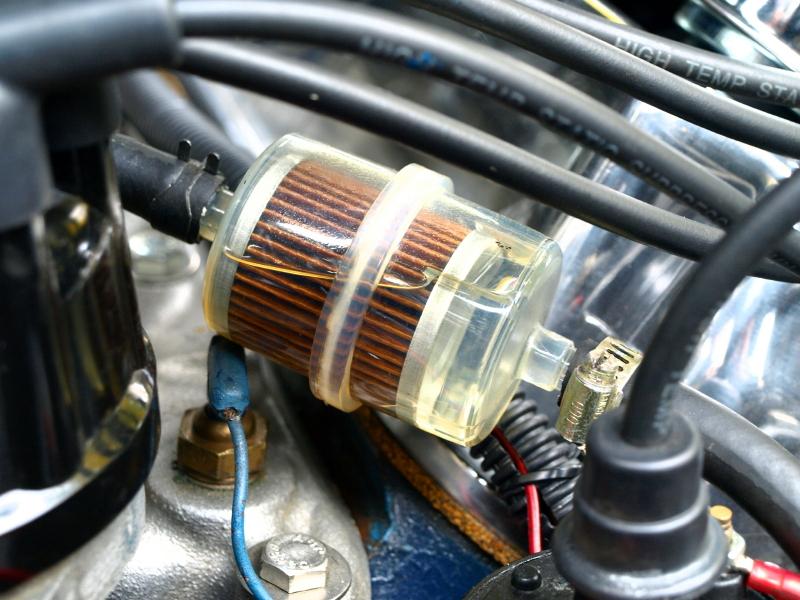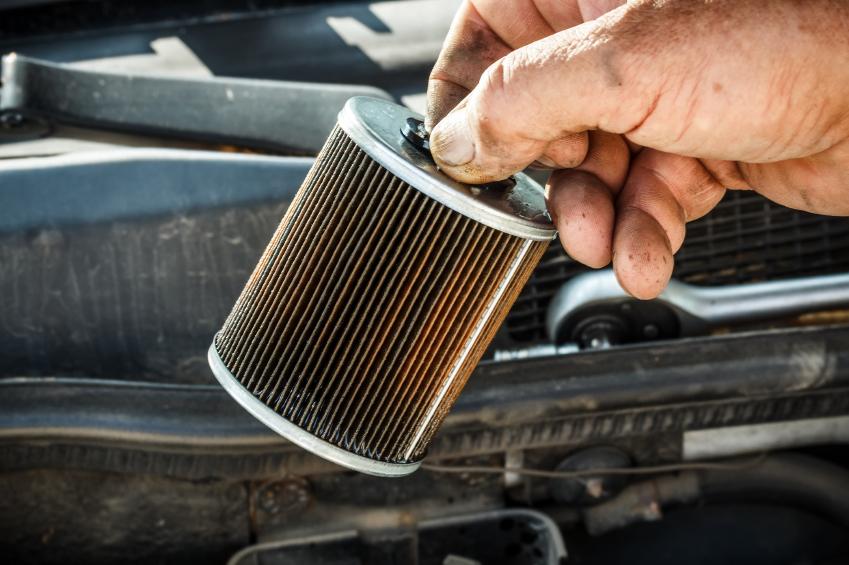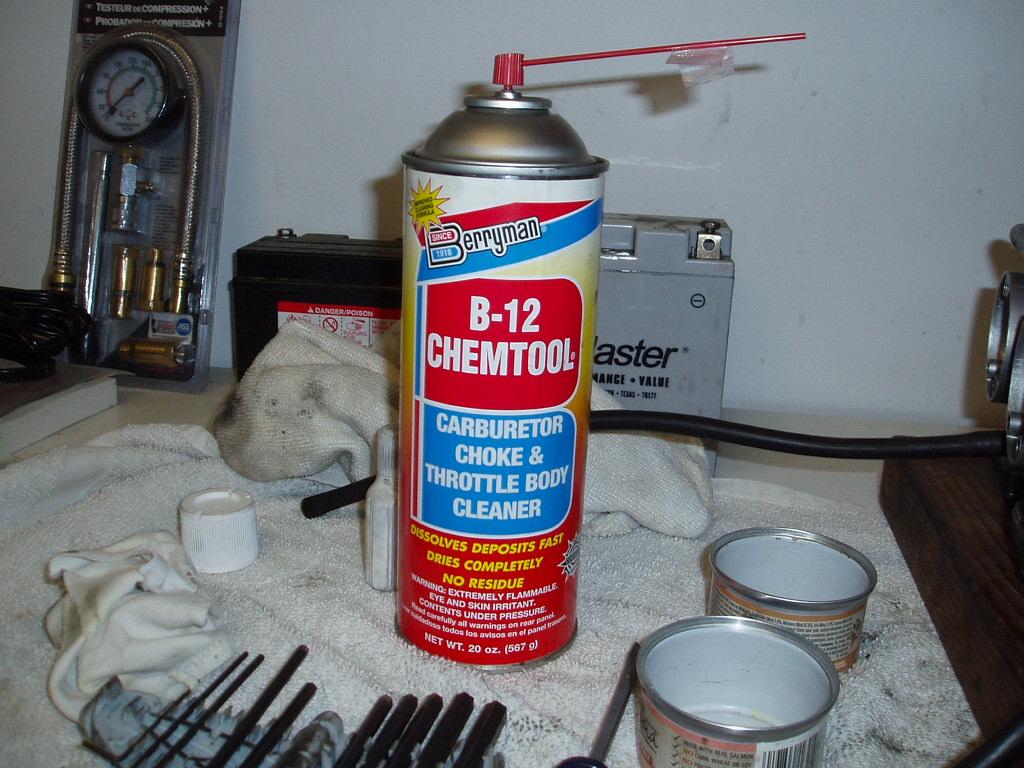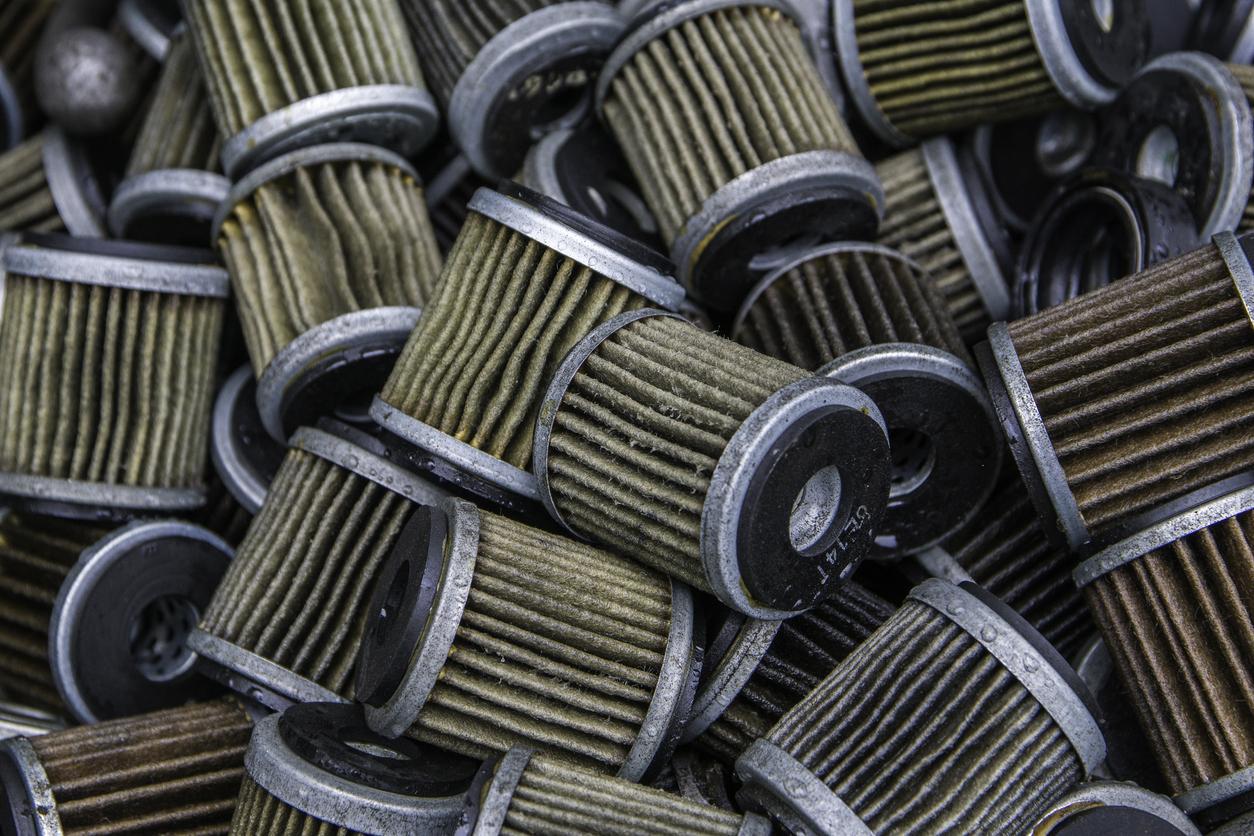How to Clean Your Fuel Filter


Your car’s fuel filter is responsible for preventing impurities in the fuel (gasoline or diesel) from entering the engine. Impurities from the fuel line can clog your carburetor or fuel injector, so it is important to learn how to clean your fuel filter so that your car keeps working at its best. A dirty fuel filter can cause your engine to not work properly, as the flow of gasoline is restricted. This will cause the car to lose power and responsiveness as it works harder to pull through the dirty fuel. When you have a very dirty fuel filter, your car may not start at all. Read this oneHOWTO article on how to clean your fuel filter so that you can keep a well maintained fuel line and add mileage to your car.
You'll need:
- Safety glasses
- Gloves
- B-12 Chemtool spray
- Jar
Find the fuel filter
First of all, find your car’s fuel filter. Start with the fuel line which comes out of your carburetor or fuel injector. Trace the fuel line back to reach your fuel filter. There are different types of fuel filter, such as the nylon fuel filter you see in the picture above. This one is see-through so that you can see the condition of the filter through it, however, many are not.
The filter usually starts out a yellow or bright orange color, so if you can see the condition of the fuel filter you will know how dirty it is by the darkness of the filter. You can find glass fuel filters, but they are not as common and slightly more dangerous due to the possibility of shattering.
If you are working with a diesel engine, the fuel system is very important in maintaining overall engine health. If you may be interested to know how to make your diesel engine last longer.

Clamp the fuel filter
Take some hose clamps and screw them onto the fuel line at a distance of around 4 inches from the filter on both the exit and entrance hoses. Tighten the clamps using a flat-head screwdriver. Close the hose tight using the clamps, so that as little gasoline as possible will escape when you remove the fuel filter. There should be an arrow on the side of the fuel filter telling you which way the fuel flows.
If you can't see an arrow on the fuel line, take a picture so that you remember which way it goes when you put it back in. If you don't think the fuel will go the wrong way and seriously damage the engine. The worst aspect is that you may not even notice there is a problem until it is too late. A fuel filter installed backwards can cause water to be sent to the fuel pump which doesn't do much until irreparable damage is caused.
While a fuel filter is relatively easy and cheap to replace, replacing a fuel pump is difficult and expensive. If you are unsure what you are doing, then ask someone who does.
Removing the fuel filter
Ensure you wear suitable eye protection before removing the filter. This is so that you don't get sprayed by any fuel when you remove it. Keep either a jar or a basin underneath the filter as you unscrew the clamps attaching the filter to the hose (obviously not the clamps you have just used to secure the hose).
As you unscrew right clamps, pull the hose off the fuel filter and allow any excess gasoline to go into the receptacle. When you remove both hoses, let all the remaining gas drip into it also. The fuel filter usually comes in a bracket or cradle to hold it in place. You'll need to push it out carefully, otherwise you can damage the filter. Once you have, let any fuel in the filter come out by holding it over and shaking out any excess gasoline.

Cleaning a dirty fuel filter
Once you have drained the fuel filter of any excess liquid, you can start to clean the dirty fuel filter. If you have an old glass fuel filter, then you can unscrew both ends and clean the individual parts with a rag. However, you will be unable to unscrew most fuel filters, so you will want to flush it out. The best way is to invest in a carburetor cleaner like B-12 chemtool, but ask the store or mechanic if it is suitable for fuel filter cleaning.
Using a B-12 chemtool
The pressurized B-12 chemtool will come with a red straw which you affix to the nozzle. Hold the fuel filter over the jar or basin. Start by spraying the B-12 chemtool into the fuel-in side while the fuel-out side is over the basin. Carefully knock the side of the fuel filter so that any debris is loosened then repeat the spraying. Turn it around so that you spray the fuel-out side with the fuel-in side over the basin, knock the debris loose and repeat. You can use the handle of your screwdriver to knock the dirt and debris loose. Don't be overzealous in knocking out the dirt, otherwise you might damage the filter, especially if it is glass.

Dry the fuel filter
Once you have cleaned the fuel filter as best you can with the B-12 chemtool and you see that less dirt is coming out either end, then set the fuel filter aside so that it can dry out for about an hour. If you don't dry it properly beforehand, then it can further contaminate the fuel line.
Reattach the fuel filter
Replace the fuel filter into the bracket or cradle so that it pops back in. Again, it is very important to make sure you have it the right way round according to the arrow or picture you took before. Insert the fuel line hose back onto the in and out nozzles of the fuel filter. Screw the clamps tight with a flat-head screwdriver. Unscrew the clamps which were securing the fuel line only once the other clamps have been tightened properly.
Now your fuel filter should be cleaned and reattached to work as it did before. If you have not properly reattached the clamps, then you run the risk of a fuel leak which is very dangerous.

Cleaning a diesel fuel filter
For those who own a diesel car, there may be an even easier way to clean the engine's fuel filter. Many diesel engine fuel filters have a design whereby there is a bowl at the bottom of the filter. The fuel filter is placed upright, so gravity allows for contaminated water (which shouldn't be in the fuel system) to be drained out. To do this, you simply place a jar underneath to collect the contaminated liquid. When you see diesel fuel in the jar, then trun the valve off.
Water in a diesel engine is particularly harmful. Since water is more dense than diesel, the water will automatically go to the bottom. Water is also more dense than gasoline, but these types of fuel filter in gas-powered vehicles are not as common.
Replacing your fuel filter
The above method is the best way to clean your fuel filter. Unfortunately, not all fuel filters can be cleaned. Most are designed to be replaced rather than cleaned, especially those which use paper filter fans. Replacing the fuel filter may be the best option for you. If you have already cleaned the fuel filter once, then it is even more likely it will simply need to be replaced.
Replacing your fuel filter is important, but it is not expensive. If you don’t want to clean it, you can purchase a replacement quite cheaply. This should be done at least every 100, 000 miles, regardless of how many times you have cleaned the fuel filter. How dirty the fuel filter becomes will also depend on various factors (contamination of the fuel tank, driving the car in adverse weather conditions, etc.). If your filter gets dirty more regularly, then you may have another engine issue which needs to be taken care of.
If you want to know more about the upkeep of your car, read this article on why is my car jerking? - all possible reasons.
If you want to read similar articles to How to Clean Your Fuel Filter, we recommend you visit our Car Maintenance and Repair category.








